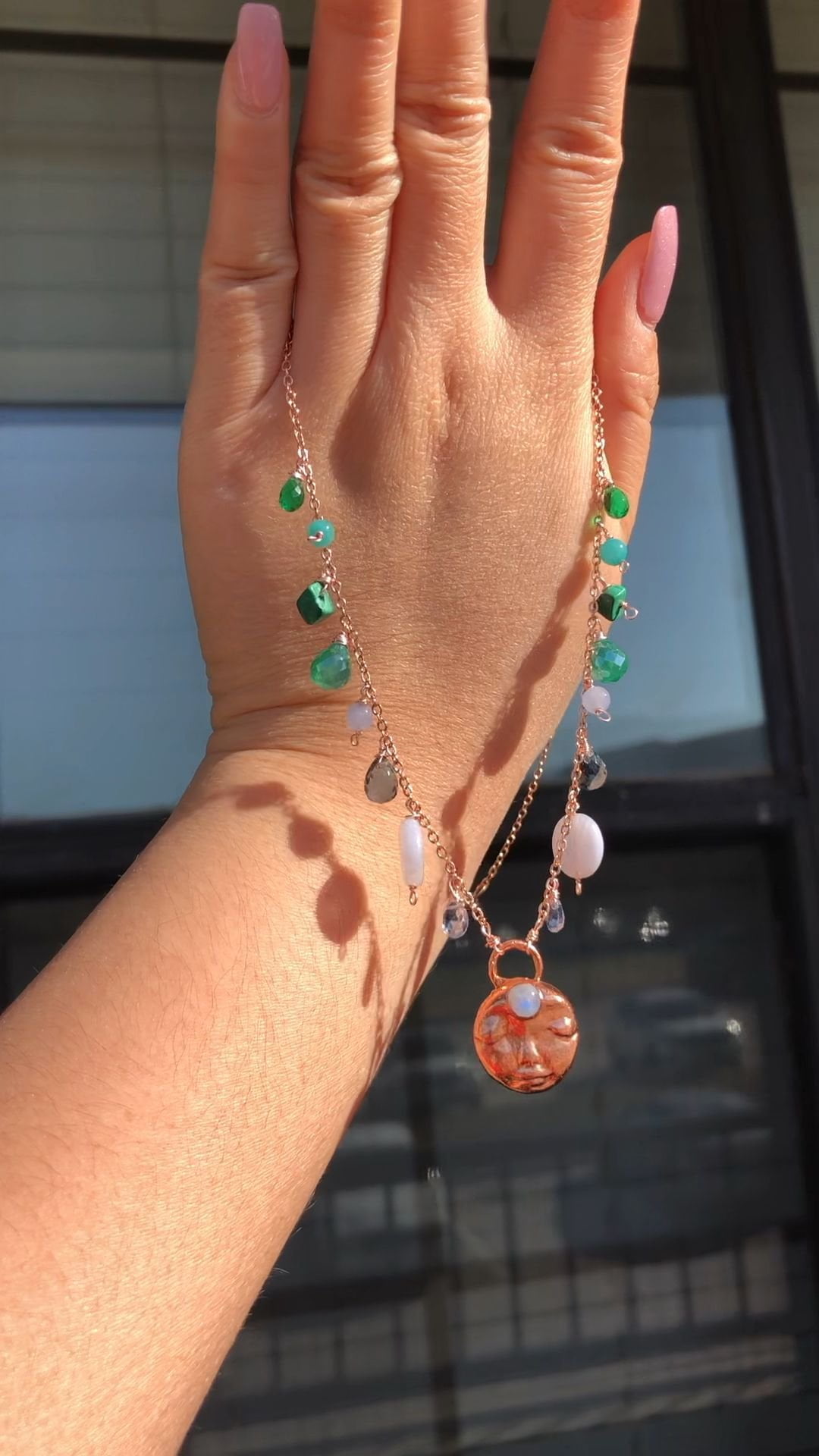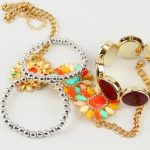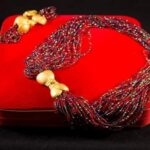Introduction
A Jewelry Wholesale Diamond Chart is a tool used by diamond wholesalers to determine the value and quality of diamonds. It allows them to compare the 4 Cs (carat, color, clarity and cut) across different diamond shapes, weights, and grades. With this information readily at hand, a retailer can make an informed decision about what type of diamond to purchase for their stock or private clients.
The primary benefit of using a Jewelry Wholesale Diamond Chart is that it helps reduce risk on investments in inventory. The chart provides buyers with up-to-date market prices so they know exactly how much they should invest in a particular diamond or shape. Additionally, it allows retailers to quickly determine which diamonds have the highest value when reselling to customers. This enables retailers to select higher quality stones while still obtaining the best prices possible and stay competitive in the marketplace. Moreover, having access to accurate pricing information ensures buyers are not overpaying or taking unnecessary chances when investing in diamonds.
Classifying Diamonds
The 4Cs of diamonds (Cut, Color, Clarity, and Carat) are used to classify diamonds and differentiate between their various qualities.
Cut is the diamond’s physical shape such as round, pear-shaped, or oval; it also includes things like symmetry and polish. A well-cut diamond will have exceptional brilliance and sparkle.
Color can range from colorless to light yellow or brown tones, with the former possessing the highest value. Generally speaking, the easier a diamond is to see through increases its value.
Clarity assesses how free a diamond is from natural flaws known as inclusions. An inclusion affects the sparkle of a diamond. The clearer a gemstone appears to be under magnification usually determines its grade of clarity.
Carat refers to the actual weight of a diamond which directly reflects its size.
In addition to taking into consideration these 4C’s when classifying diamonds, buyers should also consider factors such as fluorescence, depth percentage, table percentage and certification. Fluorescence describes the brightness that a diamond emits when exposed to ultra-violet light; the higher level of this glow could result in a lower price for the diamond but does not necessarily affect quality or clarity of that stone. The depth and table percentages look at how deeply cut or shallowly cut a particular stone may be – these measurements can affect pricing by allowing more light passage—this in turn increases fire and brilliance seen from this particular stone – though neither measurement impacts clarity nor affect beauty on its own. Finally certifications are given by an independent organization specialized in assessing diamonds such as GIA or AGS; they provide an unbiased grading assessments based on strict standards so there is clear comparison within stones while providing assurance of authenticity.
Understanding the Grading and Pricing System
The shape of a diamond can have a drastic impact on its pricing and grade. Diamonds come in many shapes, but the most popular ones are round, princess, cushion, fancy cuts and emerald cut. Round shaped diamonds typically carry the highest price tag; they are also considered to be the most valuable diamond shape due to their classic beauty and brilliance. Princess, cushion, and fancy cuts often cost less than round-shaped stones. However these other cuts may sparkle just as much or even more than a round cut depending on their cut quality. Emerald cut diamonds possess a unique charm and look flat when viewed from the top but still have their own mesmerizing sparkle when viewed from the side.
As for what makes a diamond good or great; its grading is determined by the 4C’s (cut, clarity, carat weight and color). Cut refers to how well proportioned a stone is; it determines a diamond’s brilliance and sparkle as well as looking at any blemishes on the surface of the diamond such as an extra facet or roller mark on its crown if viewed under magnification. Clarity looks at how clear or flawless (or not) a stone appears; imperfections are measured under 10x magnification where they are graded into several categories ranging from FL (flawless) which consists of no imperfections down to I3 (eyeclear) which has visible internal characteristics but still eye clean to the naked eye. Carat weight simply relates how much mass/weight each stone carries; this element directly affects pricing inversely meaning that larger stones get more expensive as they increase in size whilst smaller stones become less costly given their lower carat weights compared to larger stones with higher carat weights even if both are made with equal quality materials for cuts, clarity etc.. Lastly color gauges how ‘white’ or ‘colourless’ a diamond is perceived when seen against white paper; this scale ranges from D(Colorless)-Z(Light yellow); diamonds range grows lighter in colour going up each letter until it reaches Z. Ultimately diamonds have been getting graded based on these 4Cs for decades now so understanding them will help you make better decisions when selecting your desired gems.
Analyzing the Cut Quality of Diamonds
A well-cut diamond is often truly a sight to behold. With an understanding of the cut quality factors, buyers can better judge the beauty of the diamond. While traditional quality charts often only determine the shape and approximate measurements of diamonds, other factors including symmetry, polishing and brilliance need to be considered when determining whether a particular stone is high in quality or not. When examining diamonds for cut quality, each facet should be carefully studied and compared to others in its size range. Symmetry refers to how similar the angles and shapes of each face appear on a diamond; visible waves and corners within the facets point to less precise cutting styles that reduce sparkle and life. Additionally, even small discrepancies can add up to decrease both overall size and shine when added together on a single stone. Furthermore, polish describes how smooth or reflective each facet appears without any visible pits or scratches; these characteristics play an important role in reflecting light from surface to surface within all sides of the stone, allowing it to sparkle more brilliantly than those which don’t meet professional standards. Finally, analyzing each individual feature can also help determine whether or not the stone has certain aspects such as good brilliance (or large flashes of light), fire (or dispersions of lights) or scintillation (or sparkles). By examining all aspects combined alongside one another on jewelry wholesale diamond charts that include color encoding — developed by grading laboratories— evaluations become easier yet precise in adjudging exactly what is desired: a perfectly crafted gemstone that dazzles with every angle presented.
Comparing Prices
The study of the pricing of wholesale diamonds begins with an examination of the four C’s which govern diamond pricing: cut, clarity, carat and color. By analyzing these factors together, you can get an overall picture of the quality of a diamond and therefore its general pricing. When comparing prices between different suppliers, it is important to look at each measure individually in order to get the most accurate comparison.
For example, with cut – is the stone cut in accordance with industry standards? A well-cut stone will slightly increase a diamond’s value while a poorly-cut stone may cost less initially but appear duller in brilliance. With clarity – where on the GIA scale does it lie? Is inclusions visible under magnification and how numerous are they? The fewer inclusions present, the more expensive it will be. Carat weight also plays a factor – as with anything else, bigger is usually better and thus more expensive! Lastly we have color – here we refer to GIA’s D-Z scale – with D being completely colorless and Z having visible traces of yellow for instance. The closer it is to D on the scale, teh higher its value or price point.
There may still come unexpected factors that lend to price differentials between one supplier and another such as availability or relationships cultivated by certain dealers or even slight issues from grading reports from different labs – so it pays to compare all potential options before making any purchase decisions based solely on figures given from preliminary research.
Exploring the Impact of Supply and Demand on Prices
The jewelry wholesale diamond chart is an important tool used by wholesalers to assess the prices of diamonds in the market. This chart enables them to determine how much they should pay for a particular diamond relative to its quality and specifications, depending on current supply and demand. Looking at current trends, one can observe that market conditions can have an immediate effect on the price of a certain type of diamond. For example, if there is an increase in demand for fancy-colored diamonds, then their prices will naturally rise due to increased competition for fewer units. On the other hand, if there is an abundance of similar quality diamonds available in the market, their prices can be relatively lower due to less competition from buyers.
Furthermore, it is also possible to predict future trends based on analyzing consumption patterns in different geographical areas and calculating predicted demands. For instance, if a shift towards more affordable diamonds occurs in a certain region, wholesalers may begin investing in lower-grade stones with similar characteristics as they know that they will be able to sell them later at higher prices as customers become increasingly selective about their purchases. Analyzing consumer sentiment combined with studying sales pattern during certain periods can also help wholesalers anticipate changes occurring over long stretches of time and make informed decisions accordingly.
Bespoke Services
Jewelry wholesalers typically offer diamond chart services, which can help customers make wise purchasing decisions. However, if customers are after a unique piece of jewelry, they may wish to consider taking advantage of the bespoke services provided by certain jewelry wholesalers. Bespoke services enable clients to design and create their own pieces of jewelry with the support of a skilled jeweler who understands the details of what is entailed in making quality pieces. In this case, off-the-shelf pieces aren’t available so the customer will end up with something completely unique that’s been made just for them. The primary benefit of this type of service is that the customer can have an exact design customized to best represent their hopes and desires for a final product, instead of having to rely on a limited selection from off-the-rack items. This allows them to get exactly what they want without having to compromise due to pricing and features. Additionally, since these custom pieces are created from start to finish with individualized attention being paid throughout the design process, there is often greater precision when it comes to craftsmanship and materials used for these bespoke pieces than for off-the-shelf items. The downside is that there is generally a longer wait time associated with crafting bespoke items as opposed to purchasing pre-made pieces; however, clients who choose this route can often end up with a final product beyond their expectations.
Techniques for Identifying Synthetic or Low Quality Diamonds
The ability to recognize the difference between natural and synthetic diamonds is a valuable skill. Natural diamonds are formed deep within the Earth over millions of years and exhibit certain characteristics that synthetic diamonds simply cannot replicate. High quality gemstones, such as those outlined on jewelry wholesale diamond charts, are constructed with authentic materials and therefore require special identifying methods to verify their authenticity.
The differences in corrosion behavior, thermal conductivity, spectroscopy patterns and hardness (also known as Mohs scale of hardness) make it possible for expert jewelers to determine real from synthetic stones. Corrosion behavior is an effective means of determining whether or not a diamond is natural or created artificially; all variants of man-made stones, even HPHT treated ones, have distinctive characteristics that reveal them as tokens made in laboratories. Thermal properties also distinguish natural from manufactured gems; laboratory stones show slower cooling rates than gems found beneath the earth’s surface. Spectroscopy is another useful tool for recognizing synthetic materials; various compounds used in lab forming processes will absorb different wavelengths during spectral analysis, thus narrowing down its origin to either generated or acquired sources. Finally, using the Mohs scale is instrumental in revealing artificial trinkets; most lab creations are softer than real ones due to impurities they cannot be rid of totally regardless how advanced technology evolves over time.
Conclusion
The Jewelry Wholesale Diamond Chart is an invaluable tool for anyone wanting to purchase diamonds. Through the chart, buyers can compare various diamond qualities and research the best deal for their desired product. It will also let them see precise measurements of diamond cuts, including clarity ratings, cut types, and carat weights. This means that buyers can select a diamond with confidence, knowing exactly what they are paying for. With these details all in one place, shoppers can easily assess the quality they are getting while also getting access to the most competitive prices in the market. This comprehensive resource can be used by everyone from experienced collectors to novice buyers – so no matter your level of expertise or interest in jewelry and diamonds, you can benefit from this chart.

Welcome to my jewelry blog! My name is Sarah and I am the owner of this blog.
I love making jewelry and sharing my creations with others.
So whether you’re someone who loves wearing jewelry yourself or simply enjoys learning about it, be sure to check out my blog for insightful posts on everything related to this exciting topic!





